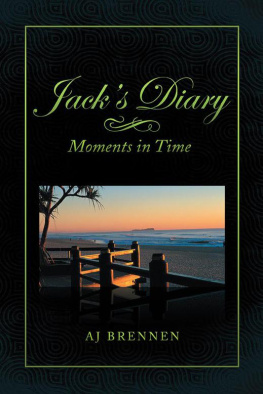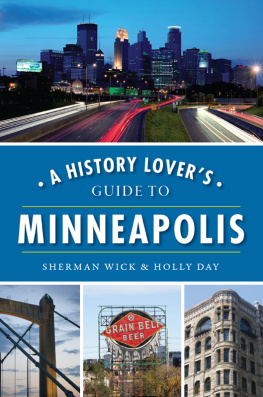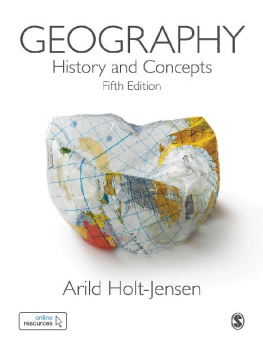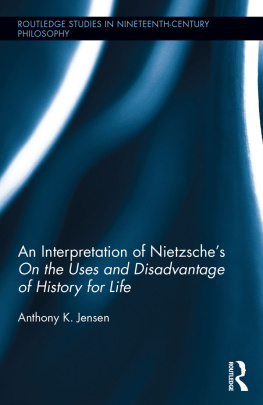ACKNOWLEDGEMENTS
The following fine people helped make this book possible. They either provided information, helped us access sites, reviewed chapters for accuracy and readability or provided photographs. Perhaps a combination of things. Thanks, hon!
Joseph Abel, Bradley Alston, Rafael Alvarez, David Armenti, Frank Armiger, Raymond Bahr, Jim Burger, Art Cohen, Nathan Dennies, Caprice Di Liello, Elizabeth Doerr, Nick Fessenden, Mike Franch, Jackson Gilman-Forlini, Craig Hankin, Matt Hood, Greg Houston, Jonathan Jensen, Lynn Williams Jensen, Anita Kassof, Chris Myers, Jill Orlov, Klaus Philipsen, Larry Pitrof, Eli Pousson, Jayna Powell, Ruth Quinn, Joseph Romeo, Charles Schlauch, D.W. Shelton, Kathryn Skare, Patrick Smith, Aisha Springer, Barbara Taylor, Maeve Thistel, Dan Van Allen, Charlie Vascellaro, Jessie Walker, Jode Watkins, Sherri Weaver and Deb Weiner.
INTRODUCTION
This colonial-era port town has been dubbed Americas southernmost northern city and the northernmost southern. As you will discover in these pages, Baltimores water-lapped, mid-Atlantic setting has done much to shape its destiny. Other nicknames you might hear include Mobtown, coined in the 1800s after the citizenrys penchant for rowdy street action, and, more benignly, Charm City, born of a 1970s public relations campaign.
By any name, here youll find nearly three hundred years of history to explore and interpret through hundreds of historic sites, monuments, attractions and museums. Baltimore presents a happy hunting ground for history buffs.
A History Lovers Guide to Baltimore is divided into twelve chapters dealing with different aspects of the citys life and timesits origins, wars, religion, industry, built environment and more. Each chapter begins with an essay providing a broad-brush chronology of the subject matter in its Baltimore context. Following the essays are descriptions, pictures and historical notes about sites where visitors can see (and, in many cases, enter) the monuments, relics, buildings, streets, green spaces and rooms where people lived and history happened.
Alas, its impossible to perfectly cater to every interest or ensure that each historic factoid is tucked away in an ideal place. Baltimore and the once-separate community of Fells Point both date to the 1700s, with .
Domed City Hall and the diverse Baltimore skyline at dusk. Courtesy of iStock/Ferrantraite.
A ready solution to such organizational challengesand one that would make your authors very happyis to read the book cover to cover before visiting Baltimore. But barring that, make note of the cross-references that pop up, use the index and explore at your own pace and whims.
In addition to navigating history, you have to navigate the town. To help with that, each site in the book is identified by address and by its broad geographic location, as outlined in the accompanying map, as well as contact information and web addresses. For the map, weve adapted our broad breakdown of city areas from a scheme devised by Peter Fitzgerald at Open Street Map (openstreetmap.org). While there are many ways to divide up any city, these nine broad divisions are a good fit for our subject matter. Because Baltimore started at the harbor and grew out from there, most of the oldest sites will be found in neighborhoods clustered around the water. The citys central northsouth corridor, defined by Charles Street and its parallel arteries, is also rich with places of historic and cultural interest. Farther from the center, historic sites are a bit more spread apart.
To help with orientation, historic sites are listed by the geographic divisions on this map. Courtesy of Tom Chalkley.
For newcomers to Baltimore, its useful to know a few general rules. Streets designated East or West are divided by Charles Street. In the same way, streets tagged as North or South are named and numbered in relation to Baltimore Street. For example, 2500 North Charles Street is twenty-five blocks north of Baltimore Street, and 5 West Biddle Street is on the first block west of North Charles Street. Numbered eastwest streets, beginning with 21st Street, start above North Avenue.
Also, note that Baltimore is an independent city largely surrounded by Baltimore County. There are many historic sites out in the county, as Baltimoreans refer to the land beyond the city line, but this book focuses on the city.
This introduction ends with a collection of citywide historic resources and sites and is a good place to start getting acquainted with the Monumental Cityanother nickname from the 1800s. Happy hunting!
YOUR GUIDE TO HISTORY
Visit Baltimore
401 Light Street Inner Harbor
(877) 225-8466 www.baltimore.org
This nonprofit agency runs the sleek visitors center on the west end of the Inner Harbor and a handsomely designed website, both of which offer a wealth of information and guidance for visitors, event planners and hometown tourists. For the history sleuth in particular, the websites What to Do section has links to History and Monuments and Museums and Attractions.
Maryland Center for History and Culture
610 Park Avenue Midtown
(410) 685-3750 www.mdhistory.org Admission Fee
Founded in 1844 as the Maryland Historical Society, this museum, research library and press is the states oldest continuously operating cultural institution and the largest entity focused on preserving and celebrating Maryland historyhome to 350,000 objects and some 7 million books and documents. Its teeming collection and expansive exhibit space cut across every chapter of this book, beginning with its fine collection of paintings depicting both prominent colonial figures and early Baltimore. Military buffs will want to check out the collection of weapons, uniforms and banners from the states various campaigns. The African American holdings include one of the largest collections of paintings by Joshua Johnson, the countrys first professional Black artist, and a hoard of photographer Paul Hendersons decades-spanning imagery of the civil rights era. Baltimores prominence as a center of furniture making is presented in an entire gallery brimming with pieces. The Center also has numerous artifacts on a storied pair of Baltimore belles and their romantic entanglements with royalty: Betsy Patterson Bonaparte, jilted bride of Napoleons kid brother Jrme, and Wallis Warfield Simpson, the Baltimore socialite who became the Duchess of Windsor after Britains King Edward VIII, forbidden by his family to marry the twice-divorced American, abdicated the throne for her in 1936.


















